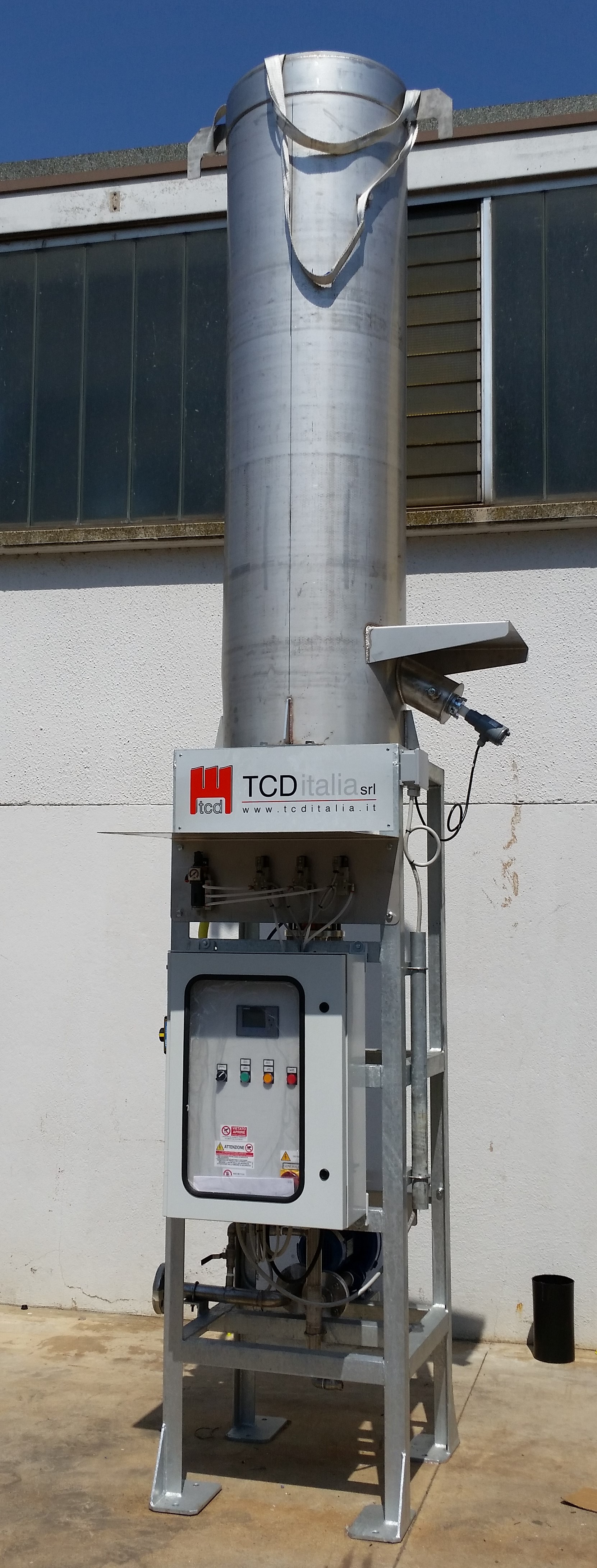In the pursuit of sustainable waste management solutions, enclosed biogas flares have emerged as a promising technology.
Understanding Enclosed Biogas Flares: An enclosed biogas flare is a specialized system designed to combust biogas generated during the anaerobic digestion process in a controlled environment. Anaerobic digestion is a biological process that decomposes organic waste in the absence of oxygen, resulting in the production of biogas, primarily composed of methane and carbon dioxide.
Functioning and Benefits: This type of flare is designed in order to obtain a high combustion efficiency and thus obtain values of CO and NOx downstream of the combustion, very low and traceable through dedicated nozzle accessible from outside.
The high efficiency flare consist of a burner installed at the base, equipped with a high-energy ignition Pilot and a flame detection system via UV scanner. The combustion air is conveyed by means of an automatic damper which by means of a Thermocouple immersed into the combustion chamber zone, automatically modulates the appropriate air flow, ensuring the constant combustion temperature up to a max. 1200 °C (visible and adjustable from control panel).
The benefits of enclosed biogas flares are significant. Firstly, they provide a safe and efficient method of disposing of biogas produced in anaerobic digestion systems. By burning the methane within a controlled environment, enclosed flares prevent its release into the atmosphere, thereby mitigating its impact on climate change.
Secondly, enclosed biogas flares contribute to the reduction of odors and potential air pollutants associated with biogas emissions. The enclosed design helps contain any odor or harmful compounds, ensuring that nearby communities are not adversely affected.
Sustainable Waste Management: Enclosed biogas flares play a crucial role in advancing sustainable waste management practices. By utilizing anaerobic digestion systems and enclosed flares, organic waste can be effectively processed and converted into valuable resources. The methane-rich biogas produced can be utilized as a renewable energy source, reducing dependence on fossil fuels and promoting a circular economy.
Furthermore, enclosed biogas flares help to divert organic waste from landfills, where it would otherwise decompose and produce methane emissions. By channeling the waste into anaerobic digesters and flares, not only can the methane be effectively combusted, but the remaining digestate can be used as a nutrient-rich fertilizer, closing the loop on waste management and promoting sustainable agricultural practices.
Conclusion: Enclosed biogas flares represent an innovative approach to sustainable waste management. By safely and efficiently disposing of biogas through controlled combustion within a sealed environment, these flares mitigate methane emissions and reduce the environmental impact of waste management systems. They offer numerous benefits, including odor control, reduced air pollutants, and the utilization of biogas as a renewable energy source. The adoption of enclosed biogas flares can contribute to a more sustainable future, where waste is effectively managed while harnessing its potential for energy generation and resource recovery.

Back to “Biogas Flares” Menu
